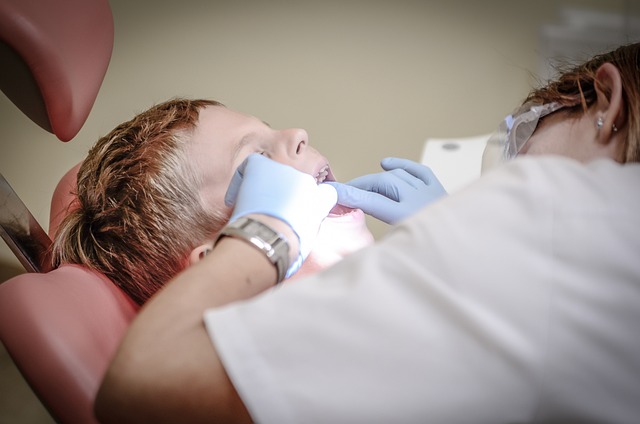When Will Invisalign Discomfort Fade? Find Relief Here!
Welcome to our article on your journey to a beautiful smile with Invisalign! Congratulations on taking the first step to straightening your teeth and improving your oral health. As with any orthodontic treatment, you may be experiencing some discomfort during the initial stages, and we’re here to help you find relief. In this article, we will explore when and how the discomfort from Invisalign will fade, providing you with valuable insight to make your journey as comfortable as possible. So, sit back, relax, and let us guide you through this exciting transformation!
1. Understanding the Invisalign Journey: When can you expect discomfort to fade?
When you begin your Invisalign journey, it’s important to understand that some discomfort is to be expected. While everyone’s experience is unique, here are some general guidelines on when you can expect any discomfort to fade:
- First Few Days: In the initial days after starting your Invisalign treatment, you may feel some soreness or pressure as your teeth begin to shift. This is completely normal and a sign that the aligners are doing their job. Don’t worry, though – any discomfort during this stage should fade within the first few days.
- Aligner Switches: As you progress through your treatment plan, you will switch to a new set of aligners approximately every one to two weeks. During this transition, it’s common to experience a temporary increase in discomfort as your teeth adjust to the new aligners. However, the good news is that this discomfort usually subsides within a few days as you get used to the new aligners.
Remember, the discomfort you may experience during your Invisalign journey is a positive indication that the aligners are working to straighten your teeth. If you find the discomfort to be more intense or persistent than expected, it’s always a good idea to reach out to your orthodontist, who can provide guidance and ensure that everything is progressing as it should. Just remember to be patient and keep in mind that the end result – a beautiful, confident smile – will be well worth it!

2. Breaking down the Invisalign experience: How long does discomfort last?
When starting your Invisalign journey, it’s common to wonder how long any discomfort may last. While each individual’s experience may vary, it’s important to know what to expect.
1. Initial adjustment period: Just like any orthodontic treatment, there is an adjustment period with Invisalign. For the first few days after getting a new set of aligners, you may experience some initial discomfort or soreness as your teeth begin to shift. This is completely normal and shows that the aligners are doing their job. Most people find that any discomfort during this period subsides within a week as their mouth adjusts to the aligners.
2. Gradual improvement: As you progress through your Invisalign treatment, you’ll likely notice that any discomfort becomes less and less noticeable with each set of aligners. Your teeth gradually adjust and become accustomed to the treatment, resulting in less soreness overall. Remember to regularly wear your aligners as instructed by your orthodontist, as this helps maintain a consistent progress and minimize any discomfort.

3. Easing the Invisalign discomfort: A comprehensive guide for relief
Embarking on your Invisalign journey is an exciting step towards achieving a straighter smile. However, you may experience some discomfort during the initial stages. Don’t worry, we’ve got you covered with this comprehensive guide on how to ease Invisalign discomfort and enjoy a more comfortable treatment process.
1. Start with soft foods: When you first start wearing your aligners, it’s common to experience some soreness. Opt for soft foods like mashed potatoes, yogurt, or soups. These will provide nourishment while minimizing discomfort. Remember to chew with your back teeth to avoid putting excessive pressure on the aligners.
2. Use orthodontic wax: If your aligners cause irritation or sores on the inside of your mouth, orthodontic wax can be a game-changer. Apply a small piece of wax on any rough edges or discomfort-causing areas of the aligners. It acts as a protective barrier to reduce friction and prevent injuries to your gums or tongue.
3. Don’t skip your aligner schedule: Skipping or prolonging the recommended wear time of your aligners may lead to increased discomfort. It’s crucial to follow your orthodontist’s instructions and wear your aligners for the prescribed duration. This will ensure that your teeth are consistently moving without any unexpected discomfort.

4. Patience is key: When will your discomfort start to subside with Invisalign?
Starting a new orthodontic treatment with Invisalign can cause some discomfort initially, but rest assured that it is completely normal. While everyone’s experience may vary, here are some general guidelines on when you can expect the discomfort to start subsiding:
- Within the first few days of wearing your first set of aligners, you may feel some pressure or soreness as your teeth begin to shift. This is a sign that Invisalign is working! Remember to wear your aligners for the recommended 20-22 hours per day to ensure optimal results.
- After about a week or two, your mouth will start getting used to the aligners, and any initial discomfort should start to fade away. This is a great time to practice patience and remind yourself that your smile transformation is well underway.
It’s important to keep in mind that everyone’s journey with Invisalign is unique, and factors such as the complexity of your case or personal sensitivity can influence the timeline. If you experience prolonged or excessive discomfort, don’t hesitate to reach out to your orthodontist for further guidance. Remember, maintaining good oral hygiene and following the recommended care instructions will also contribute to a smoother and more comfortable Invisalign experience.

5. Managing Invisalign discomfort: Tips and tricks for finding relief
Dealing with discomfort while wearing Invisalign aligners is common, especially during the first few days of each new set. However, there are several tips and tricks you can try to find relief and make your Invisalign experience more comfortable. Here are some helpful suggestions:
1. Switch to new trays before bedtime: One effective way to manage discomfort is to change to a new set of aligners before going to bed. This allows your teeth time to adjust while you sleep, minimizing any initial soreness when you wake up.
2. Use orthodontic wax: If you experience irritated areas where the aligners rub against your gums or lips, applying orthodontic wax can provide relief by creating a smooth barrier between the aligners and your mouth.
- 3. Rinse with warm saltwater: If you feel any gum irritation or soreness, rinsing your mouth with warm saltwater can help alleviate discomfort. Simply dissolve half a teaspoon of salt in a cup of warm water and swish it around in your mouth for about 30 seconds before spitting it out.
- 4. Take over-the-counter pain relievers: If the discomfort persists, you can try taking pain relievers such as acetaminophen or ibuprofen. However, always consult your orthodontist or pharmacist for appropriate dosage recommendations.
- 5. Stay consistent and patient: Remember, discomfort is a normal part of the teeth-straightening process. Stick to your treatment plan and be patient, as it usually subsides within a few days as your teeth adjust to the new aligners.
By following these tips and tricks, you can effectively manage any discomfort that comes with wearing Invisalign aligners. If the discomfort persists or becomes unbearable, be sure to consult your orthodontist for further guidance and support.
6. What to expect with Invisalign: When does the initial discomfort fade away?
When you first start your Invisalign treatment, you may experience some initial discomfort. Don’t worry, this is completely normal and is a sign that your aligners are doing their job! The good news is that this discomfort will fade away over time as you get used to wearing your aligners.
Here’s what you can expect:
- Tenderness: Initially, you may feel some tenderness or soreness in your mouth. This is because your teeth are adjusting to the pressure from the aligners. This tenderness usually subsides within a few days.
- Slight pressure: As your teeth start to shift into their new positions, you might feel some pressure. This is a positive sign that your aligners are working effectively. The pressure will gradually diminish as your teeth continue to move.
- Speech changes: For the first few days, you may notice a slight change in your speech. This is completely normal and your tongue will quickly adapt to the aligners. Practicing speaking out loud can help speed up the adjustment process.
- No sharp edges: Invisalign aligners are made from smooth plastic, so you won’t have to worry about any sharp edges cutting your mouth or tongue. The aligners are designed to fit comfortably and securely.
Remember, everyone’s experience with Invisalign is unique, but most people find that any initial discomfort fades away within a week or two. Just be patient and follow your orthodontist’s instructions to ensure the best results. Before you know it, you’ll be enjoying a straighter, more confident smile!
7. The Invisalign relief timeline: When can you start feeling more comfortable?
Once you start your Invisalign journey, you may wonder when you’ll begin to feel more comfortable wearing the aligners. While everyone’s experience may vary, there is a general timeline that can give you an idea of what to expect. Remember, this timeline is just an estimate, and it’s important to consult with your orthodontist for personalized guidance.
Typically, during the first few days of wearing your aligners, you may feel some discomfort as your teeth adjust to the new pressure. This is completely normal and a sign that the aligners are working. After about a week, you should start to notice the initial discomfort subsiding as your mouth becomes accustomed to the aligners. However, some individuals may take a little longer to find relief.
- Days 1-3: Initial discomfort as teeth adjust to aligners.
- Days 4-7: Gradual decrease in discomfort as mouth adjusts.
- Days 7 and beyond: Increased comfort as mouth adapts to aligners.
Remember to always wear your aligners as directed by your orthodontist in order to achieve the best results. If you have any concerns or if the discomfort persists beyond what is expected, don’t hesitate to reach out to your orthodontist for further guidance. They are there to support you throughout your Invisalign journey!
8. Unveiling the secrets to minimizing Invisalign discomfort and maximizing comfort
Wearing Invisalign aligners doesn’t have to be a source of discomfort. By following a few simple tips, you can ensure a more comfortable experience throughout your treatment journey. Here are some secrets to minimize Invisalign discomfort and maximize your overall comfort:
- Stay consistent: It’s crucial to wear your aligners for the recommended 20-22 hours a day. Consistency helps your teeth adjust more smoothly, minimizing any discomfort that may arise from unnecessary movement.
- Take it slow: Start by wearing the aligners for shorter periods and gradually increase the duration. This allows your mouth to adjust and prevents sudden discomfort caused by shifting teeth.
- Use dental wax: If your aligners cause irritation or sore spots, apply dental wax to the affected areas. This protective layer acts as a barrier and provides relief from any discomfort or friction.
Additionally, maintaining good oral hygiene is vital for a comfortable Invisalign experience. Remember to brush and floss your teeth before putting your aligners back on, ensuring no food debris gets trapped, which could cause discomfort or bad breath. By following these simple pointers, you’ll be on your way to a more comfortable and enjoyable journey with Invisalign!
9. Taking the edge off Invisalign discomfort: How to speed up the fading process
Wearing Invisalign aligners is an excellent way to achieve that straight, beautiful smile you’ve always wanted. However, we know that discomfort can sometimes be a part of the process. Luckily, there are a few tips and tricks you can try to help speed up the fading process and make your Invisalign experience even more comfortable!
- Use a cold compress: If you’re experiencing any soreness or discomfort after switching to a new set of aligners, applying a cold compress to your cheeks can provide instant relief. Simply wrap a few ice cubes in a cloth or use a gel pack and hold it gently against the outside of your mouth for a few minutes to reduce inflammation and numb the area.
- Switch aligners at night: Many find it helpful to switch to a new set of aligners right before bed. This allows your teeth some time to adjust overnight, minimizing any initial discomfort that might be felt. Plus, you’ll be asleep and not as aware of any minor soreness or pressure that may occur.
- Stay hydrated: Drinking plenty of water throughout the day can not only keep you hydrated, but it can also help alleviate any discomfort from Invisalign. Water helps to flush out any bacteria or debris that may accumulate around the aligners, reducing the risk of irritation and keeping your mouth feeling fresh.
By following these tips, you’ll be able to take the edge off Invisalign discomfort and speed up the fading process. Remember, it’s normal to experience some initial soreness or pressure, but with these strategies, you can ensure your journey to a gorgeous smile is smooth and comfortable!
10. Your ultimate guide to Invisalign relief: When will your discomfort finally vanish?
When you decide to straighten your teeth with Invisalign, you might experience some discomfort or soreness during the treatment. But don’t worry, it’s completely normal! In this guide, we’ll provide you with some tips and tricks to find relief from your Invisalign discomfort so that you can enjoy your journey towards a perfect smile.
Tips for Invisalign Relief:
– Give it time: Remember that your teeth need time to adjust to the aligners, and discomfort usually subsides within a few days.
– Use dental wax: If your aligners are rubbing against your gums or causing irritation, applying dental wax to the edges can alleviate the discomfort.
– Take over-the-counter pain medication: Non-prescription pain relievers like ibuprofen can help reduce any soreness you may experience. However, it’s always best to consult your orthodontist or dentist before taking any medication during your treatment.
Frequently Asked Questions
Q: What is Invisalign and why might it cause discomfort?
A: Invisalign is a modern orthodontic treatment that uses nearly invisible aligners to gradually shift teeth into their desired position. While generally comfortable, some people may experience discomfort due to pressure placed on the teeth during treatment.
Q: When can I expect the discomfort from my Invisalign aligners to fade?
A: Fortunately, any initial discomfort with Invisalign typically subsides within a few days to a couple of weeks. It’s important to remember that each person’s experience may vary, but with time, you’ll start feeling more at ease as your teeth adjust.
Q: Are there any tips or remedies to alleviate Invisalign discomfort?
A: Absolutely! One of the best ways to find relief is by simply staying consistent with wearing your aligners as instructed by your orthodontist. This helps your teeth adapt to the aligners, reducing discomfort over time. Additionally, using over-the-counter pain relievers such as ibuprofen can help manage any discomfort you may experience.
Q: Can I do anything else to minimize the discomfort?
A: Yes, there are several things you can try. Chewing on a cold teething toy or applying a cold compress to your face can help numb the area and provide temporary relief. Drinking cold beverages or eating cold, soft foods can also soothe any irritation you might be feeling.
Q: What are some common mistakes that could prolong the discomfort caused by Invisalign?
A: One common mistake is removing the aligners for extended periods. It’s crucial to wear your aligners for the recommended 20-22 hours a day. Failing to do so could significantly extend the discomfort and delay your progress.
Q: Will I have to deal with discomfort throughout my entire Invisalign treatment?
A: Although it is normal to experience mild discomfort during the first few days or weeks of each new aligner set, it should gradually diminish. Remember that every aligner set brings slight adjustments, but the discomfort becomes less noticeable over time.
Q: Is it necessary to visit my orthodontist if the discomfort persists?
A: It is advisable to reach out to your orthodontist if the discomfort is severe or persists longer than expected. They can evaluate your progress and provide guidance or adjustments if needed. Your orthodontist’s expertise is invaluable in ensuring your treatment is progressing smoothly and comfortably.
Q: Are there any additional measures I can take to ensure a more comfortable Invisalign experience?
A: Absolutely! Maintaining good oral hygiene by properly brushing and flossing your teeth and aligners is essential. This helps prevent any additional discomfort caused by oral issues such as gum sensitivity or irritation. Drinking plenty of water and avoiding hot drinks while wearing your aligners can also contribute to a more comfortable experience.
Q: How long does an average Invisalign treatment take, and when will I start noticing visible changes in my teeth?
A: The duration of an Invisalign treatment varies depending on individual needs, but it typically takes between 6-18 months. Visible improvements in tooth alignment can often be noticed within the first few months of treatment, providing you with the motivation to persevere through any temporary discomfort.
Q: What are the long-term benefits of choosing Invisalign despite the initial discomfort?
A: Invisalign offers numerous benefits, including improved dental alignment, enhanced oral health, and a more confident smile. It’s essential to remember that any discomfort experienced during treatment is temporary, while the long-term benefits can have a lasting positive impact on your oral well-being and self-esteem.
Conclusion
We hope that this article has provided you with valuable insights and useful information about the discomfort associated with Invisalign treatment. Remember, while it is completely normal to experience some initial discomfort, finding relief is possible. By following the tips and suggestions outlined here, you can make your journey towards a straighter smile as comfortable as possible. Don’t be discouraged if the discomfort lasts a little longer than expected, as it typically fades within a week or two. Just keep in mind that each individual’s experience may vary. Always consult with your orthodontist or dentist if you have any concerns or questions regarding your Invisalign treatment. Wishing you a pain-free and successful smile transformation journey!





